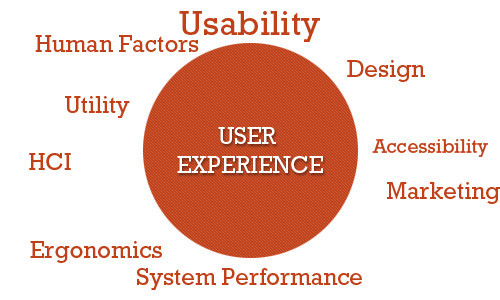User Experience (UX) design plays a vital role in the success of a website. It focuses on creating an intuitive, seamless, and enjoyable experience for users, ultimately leading to increased engagement, conversions, and customer satisfaction. In this blog post, we will delve into three key ways in which user experience design impacts website success.
- Enhancing Usability: One of the primary goals of UX design is to improve the usability of a website. Usability refers to how easily users can navigate, interact with, and accomplish their goals on a website. By conducting user research, creating intuitive navigation structures, and employing user-centered design principles, UX designers optimize the usability of a website.
a. Intuitive Navigation: A well-designed navigation system ensures that users can find what they’re looking for effortlessly. Clear and organized menus, logical categorization, and intuitive labels make it easier for visitors to navigate through the website and find the desired information or products.
b. Seamless Interactions: UX designers focus on creating interactions that feel natural and intuitive. This includes smooth scrolling, responsive buttons, error handling, and intuitive forms. These small but significant design details contribute to a seamless user experience, reducing frustration and improving overall satisfaction.
c. Clear Calls-to-Action (CTAs): UX design places importance on creating clear and compelling CTAs. Well-designed CTAs guide users toward their intended actions, such as making a purchase, signing up for a newsletter, or contacting the business. Attention to placement, design, and messaging can significantly impact the conversion rate and overall success of a website.
- Optimizing User Engagement: User engagement is a crucial factor for website success. UX design focuses on creating experiences that captivate and retain users, encouraging them to spend more time on the site, explore its offerings, and return in the future.
a. Visual Appeal: A visually appealing website with well-chosen colors, fonts, imagery, and layout creates a positive impression and draws users in. Attention to aesthetics helps establish brand credibility and builds trust, fostering user engagement.
b. Content Hierarchy and Readability: UX designers consider the organization and presentation of content to ensure that it is easily scannable and readable. Thoughtful use of headings, subheadings, bullet points, and white space improves readability, making it easier for users to consume the information and engage with the content.
c. Personalization and Customization: UX design can incorporate personalization features that tailor the website experience to individual users. This can include personalized recommendations, saved preferences, or customizable settings. Personalization enhances user engagement by delivering relevant content and creating a sense of ownership.
- Driving Conversion and Business Goals: Ultimately, a successful website is one that helps achieve business objectives, such as generating leads, driving sales, or increasing subscriptions. UX design can significantly impact these conversion rates and contribute to the website’s overall success.
a. Streamlined Conversion Funnels: UX designers optimize the conversion process by designing streamlined and intuitive funnels. Simplifying the steps required for users to complete a desired action reduces friction and increases the likelihood of conversion. Clear progress indicators, simplified forms, and transparent checkout processes all contribute to a positive user experience and higher conversion rates.
b. Trust and Credibility: UX design elements, such as testimonials, reviews, security badges, and trust signals, build credibility and trust with users. When visitors feel confident in the legitimacy and reliability of a website, they are more likely to convert and engage with the business.
c. Error Prevention and Recovery: UX design focuses on anticipating and preventing user errors through careful validation, error messaging, and helpful tooltips. Additionally, providing clear instructions and assistance during error recovery enhances the user experience and minimizes abandonment, leading to improved conversion rates.
Conclusion:
In conclusion, user experience design has a profound impact on the success of a website. By prioritizing usability, optimizing user engagement, and driving conversions, UX designers create websites that are intuitive, enjoyable, and effective in achieving business goals.
A well-designed website not only enhances usability through intuitive navigation and seamless interactions but also captivates users with visually appealing designs and readable content. Personalization and customization features further enhance engagement by delivering tailored experiences.
Moreover, by streamlining conversion funnels, establishing trust and credibility, and preventing and recovering from errors, UX design maximizes the likelihood of user conversions and contributes to the overall success of the website.
As businesses increasingly recognize the importance of user experience, investing in skilled UX designers becomes imperative. By prioritizing the needs and expectations of users, businesses can create websites that not only meet their objectives but also provide a positive and memorable experience for their target audience.
Remember, user experience design is an ongoing process that involves continuous research, testing, and refinement. By staying attuned to user feedback and industry trends, businesses can continuously improve their website’s UX, ensuring long-term success and customer satisfaction.





